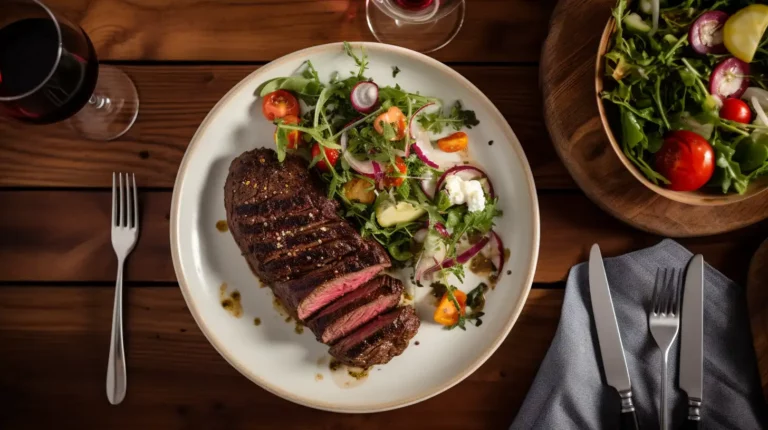There’s an activity little humans and older adults do that benefits them greatly—it’s called a “power nap.” They may be on to something, actually, for napping seems to give them a boost of energy and carry them through the day.
Isn’t it considered “lazy” or “unproductive,” though? One would think, but this is simply not true, according to Dr. Michael Breus, a.k.a. the Sleep Doctor.
“There are many benefits to napping,” he explains in his program on Mindvalley, The Mastery of Sleep Quest. “To get all the potential benefits and avoid the pitfalls, naps need to be used correctly.”
There’s a cute little quote provided by the internet: “When life knocks you down, just stay there and take a nap.” And with all the benefits of a power nap, imagine the powerhouse you’d be when you wake up from that slumber.
What Is a Power Nap?
If you’re unfamiliar with the concept, a power nap is sleeping for a short time during the day. “Siesta,” “catnap,” “forty winks,” “a doze,” or “a horizontal life pause” — call it what you want, but there’s no arguing that taking a power nap can help you recharge.
However, it does leave one wondering what the difference between a power nap and a good ol’ regular one is. Is a power nap just a nap, but with…power? As it turns out, there’s more to it than meets the eye.
While a regular nap has advantages, it may be too long for your schedule, and life doesn’t always grant you that kind of time. That’s when a power nap comes in handy — it’s quick and does the job, much like a shot of espresso.
How long should a power nap be?
While a regular nap lasts somewhere between 30 to 90 minutes, a power nap is much shorter than that: between 10 to 30 minutes. Some experts, however, have concluded 20 minutes is just right, but all agree that it shouldn’t exceed the 30-minute mark.
There’s a reason for this, of course. But before diving into that, it helps to get the gist of the stages of sleep.
- NREM (non-rapid eye movement) Stage 1: The brain goes from a wakeful state to slumber. This happens during the first five minutes of falling asleep.
- NREM Stage 2: Your body goes further into relaxation as your heartbeat and breathing slow down. This is around 25 to 60 minutes.
- NREM Stage 3: This is known as the deep sleep stage, where your brain waves shift into the delta. It’s when your body is in a physically restorative state. It typically lasts between 20 to 40 minutes.
- REM (rapid eye movement) Sleep: The phase when you’re going through a mentally restorative state. According to science, this is when your brain moves information from short-term to long-term memory.
One sleep cycle lasts around 90 minutes on average. So that means we go through about four to six sleep cycles per night for the recommended daily six to nine hours of sleep.
What does that mean for napping? For regular naps, if it’s 90 minutes, you’ll go through one full sleep cycle. And according to a study published in the Journal of American Geriatrics Society, anything exceeding that can create problems with cognition.
For power naps, on the other hand, the 30-minute mark will get you into NREM 2, helping you to wake up with more alertness. However, going over into NREM 3 and trying to wake up in that stage can lead to grogginess.
What is the best time to nap?
While napping can help you feel less sluggish during the day, there is an optimal time to get the rest you need without disturbing your night’s sleep. And experts suggest before or post-lunch — ideally, as per Dr. Breus, before 3 p.m.
It’s really a matter of your chronotype, your body’s natural inclination to sleep at a certain time (and you can find out yours with this quiz). If you’re an early riser, your circadian rhythm might slump in around noon; if you tend to wake up later, then your slump might naturally decline a little later as well.
Sleeping later in the day (i.e., after 3 p.m.) can be counterproductive, making it more difficult for you to fall asleep at night. Dr. Breus adds, “I can’t count the number of patients I have who try to catch some rest during the day only to have their naps interfere with either their nighttime sleep and throw off their sleep-wake schedules, or they just can’t get out of the nap, and they’re groggy the rest of the day.”
The timing and duration of your nap depend a lot on your individual needs and circumstances.
— Dr. Michael Breus, trainer of Mindvalley’s The Mastery of Sleep Quest
So find the best nap time for you — find out your chronotype and test out different times to see which half-an-hour is best for you to catch those forty winks.

5 Science-Backed Benefits of Taking a Power Nap
You might question, “Do power naps work?”—and that’s a valid one to ask. After all, how effective is 10 to 30 minutes of shut-eye anyway?
It turns out, there are science-backed benefits to a quick snooze. Here are five of them, as shared by Dr. Breus, with research findings.
1. Boost your brain function
Sleep allows our body to rejuvenate itself and provides a boost of energy. And that goes for the brain, too.
The same study in the Journal of American Geriatrics Society looked at the link between afternoon napping and cognitive function. It found that the overall cognition of those who napped for 30 to 90 minutes was significantly better than that of those who didn’t nap.
2. Enhance your creativity
There’s a legendary story about how Thomas Edison would create solutions when he was stumped—he’d take a nap in his chair, holding something (various versions include marbles, quarters, or a steel ball) in his hand. As he dozed off, the thing he was holding would fall, and the noise would wake him up, and that would spark a Eureka! moment.
A 2021 study published in the Journal of Science Advances demonstrated that brain activity during NREM Stage 1 ignites creative sparks. The participants were given mathematical problems to solve without knowing about the hidden rule, which would’ve allowed them to solve the equations almost instantly. The researchers found that those who spent at least 15 minutes napping found the hidden rule (as opposed to the ones who remained awake).
Their findings suggest there’s a “creative sweet spot” with a quick snooze, much like Thomas Edison’s version of a power nap. (Additionally, they also found that those who transitioned into deep sleep negated the results and weren’t able to find the hidden rule. That means going into NREM Stage 3 and REM may be great for our body’s rejuvenation, but not so much for our creativity.)
3. Improve your critical thinking skills
In addition to brain function, another thing power naps can help with is being able to think clearly and rationally. Research shows that napping improves memory processing and learning.
In fact, scientists at Germany’s Saarland University found a 45- to 60-minute power nap can boost memory performance significantly. Their 2015 study observed two groups of participants who had to memorize various words and word pairs.
One group was then allowed to nap while the other group was given a DVD to watch. Their results showed that those who had taken a nap retained more words and word pairs from memory than those who watched the DVD.
4. Lower your stress levels
There’s evidence that sleep helps relieve stress and support the immune system. But what about naps?
Thankfully, taking a siesta can lower stress levels as well as reduce the impact of insufficient sleep. And a 2015 randomized controlled study backs this up.
The participants were a group of 11 healthy men between the ages of 25 and 32. They underwent two sessions of sleep testing—one where they were limited to two hours of sleep for one night and the other where they could take two 30-minute naps the day after their sleep.
The researchers’ findings suggest that power naps have stress-releasing and immune effects. As one of the researchers, Brice Faraut, Ph.D., adds, “Napping may offer a way to counter the damaging effects of sleep restriction by helping the immune and neuroendocrine systems to recover.“
5. Give you more energy and improve your physical performance
Sleep deficiency can be due to many reasons. It could be that you’re sleep-deprived, don’t get quality sleep at night, or have a sleep disorder. However, taking a power nap can benefit your energy levels and physical performance.
One study published in Frontiers in Physiology compared the effect of different nap times (25, 35, and 45 minutes) on a high-intensity, short-duration performance—in this case, a five-meter shuttle run. They found that taking a daytime nap, no matter the timing, helped improve performance and reduce fatigue; however, the 45-minute nap was the most effective.
This can definitely help those who work high-stress, shift-related jobs, like nurses, doctors, truck drivers, military workers, and so on.

How to Take a Power Nap: 3 Simple Tips From the Sleep Doctor
It’s one thing to optimize your sleep at night; it’s another to do so for your power nap. But here’s the thing: It helps you fall into NREM faster.
Given that a power nap lasts anywhere from 10 to 30 minutes, it could be beneficial to learn tips on how to take a power nap so that you can get the most out of it. Here are three that Dr. Breus advises doing.
1. Try a nap-a-latte
This nap is, hands down, one of the Sleep Doctor’s favorites. It’s “a 25-minute nap taken somewhere in the early afternoon,” he explains. And here’s how you do it:
- Take a cup of drip black coffee,
- Throw in three ice cubes,
- Chug it really quickly, and
- Close your eyes immediately.
He adds, “When you wake up after 25 minutes, that caffeine is kicking in, and you’re good to go for four hours.”
2. Make it short and sweet
This is what Dr. Breus calls the “CEO Nap.” It’s a power nap taken in the mid-afternoon, around 1-3 p.m., that’s meant to help boost your daily energy, focus, and mental performance.
“This is somewhat similar to the nap-a-latte but without the caffeine,” he says. And if you need a little help to get into sleep mode, you can do breathing techniques.
Remember to limit the time to 30 minutes max; use an alarm if you have to. Any more than that can lead to grogginess and tiredness when you wake up.
3. Nap when your child naps (if you’re a parent)
If you’re a parent, you may have quickly learned that having children and sleep deprivation go hand-in-hand. Between your baby’s naptime, feedings, and diaper changes, getting any kind of sleep seems like a “wish upon a star.” So this tip makes for one of the best sleeping tips for new parents.
“The strategy here is to nap when your child naps,” Dr. Breus advises. “You’ll have more energy, more patience, and more focus for your child and all other parts of your busy life.”
Nap Mode: On
If a good night’s sleep is like ice cream, a power nap is like the sprinkles on top. While the ice cream is great on its own, the sprinkles enhance its flavor.
Now, if you want to learn how to sleep better (or nap), you can dive in deeper with Dr. Michael Breus in The Mastery of Sleep Quest on Mindvalley. With his guidance, you can learn how to:
- Identify your chronotype so you know what your ideal sleep time is,
- Discover the number of hours you really need for sleep,
- Reprogram your mind and body to get quality sleep through the night, and
- Wake up feeling energized sans an alarm clock.
When you sign up for a Mindvalley account, you can access the first few lessons for free. And if you need additional resources, you can check out the vast library of meditations, including those specifically designed to help you sleep.
Your greatness knows no limits. And you can unleash it…after a quick nap.
Welcome in.








